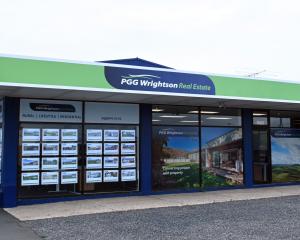
It is the first time median house prices in Otago have breached the $500,000 level, led by record pricing in Dunedin where an average home will set you back $462,290, numbers which real estate commentators say have been influenced by economics of higher demand and less stock on offer.
Latest numbers from the Real Estate Institute of New Zealand (REINZ) show that house prices in Otago as a whole have ratcheted up by 21.7% to $505,000 in July, compared with a $415,000 average price tag just a year ago. The increase reflects a 7.9% increase in the REINZ house price index (HPI) in Otago, more than five times the national increase of 1.5%.
At an average price of $1.2 million, in July the most expensive homes in Otago were found in Wanaka, superseded only by Auckland’s Orakei ward which boasted a median price of $1.3 million.
The biggest increase in Otago was in Waitaki, which showed an improvement of 13.5% to a median price of $320,000, while Clutha climbed 11.1% to $280,000. Median home prices in Central Otago moved up 9.7% to $488,000 while Queenstown-Lakes came off nominally from $1,025,000 to $961,000 for July, sales volumes also down by 8.1%.
REINZ regional director Gail Hudson said the decline in Queenstown reflected more realistic buying in the current market.
"Anything in the middle of the road is fetching a fair market price. Buyers are spread across the market with the majority of listings going steady up to the $1 million mark.’’
Liz Nidd, of Dunedin’s Nidd Realty, said the record median price in the city had been largely driven by the drop in listings.
"Listings fell 5.7% annually. Rentals are limited and sellers are hesitant to sell their homes in case they cannot find another house to buy which is likely to explain the low levels of inventory in the region.’’
She said there were signs of the market loosening up heading into spring, with greater numbers of listings coming on to the market.
REINZ chief executive Bindi Norwell said overall signs were encouraging.
"It was the first time in eight months that we’ve seen the number of properties sold around the country increase on an annual basis, suggesting that we’re starting to see some early signs of growth.’’
She said while some of this could be attributed to more certainty after the removal of the capital gains tax proposal, it was also about pockets of renewed confidence and parts of the market finding its new normal in terms of pricing.
"With August’s surprise 50 basis points drop in the OCR, going forward we expect to see even more signs of growth, especially as we move towards the warmer weather when we tend to see more activity in the market.’’
Nationally, nine out of 16 regions saw annual increases in sales volumes with strong growth recorded at the top of the South Island and the middle of the North Island.
While the median price for Auckland remained unchanged at $830,000, the Auckland region saw the highest number of properties sold in the month of July for three years and the first annual volume growth in eight months.
In July, the REINZ HPI saw 11 out of 12 regions experience an annual increase in their index level, with Auckland the only region to experience a decrease, declining 3.3% year-on-year to 2789.
"Although the three-month trend of +0.5% is starting to show signs of green shoots,’’ Ms Norwell said.
In July, the median number of days to sell a property nationally increased by three days from 37 to 40 when compared with July last year. However, this was down on last month’s figure of 41 days.
At the top end of the market, the percentage of properties sold for $1 million or more remained at 12.9%. Seven hundred and sixty-two houses sold for $1 million or more in July 2018 compared with 792 houses in July 2019.
Comments
Is this about the average price or the median price. These are two very different things and I would hope the ODT reporters would know the difference.
The two terms seem to be being interchanged as if they are the same thing. Very poor reporting.












